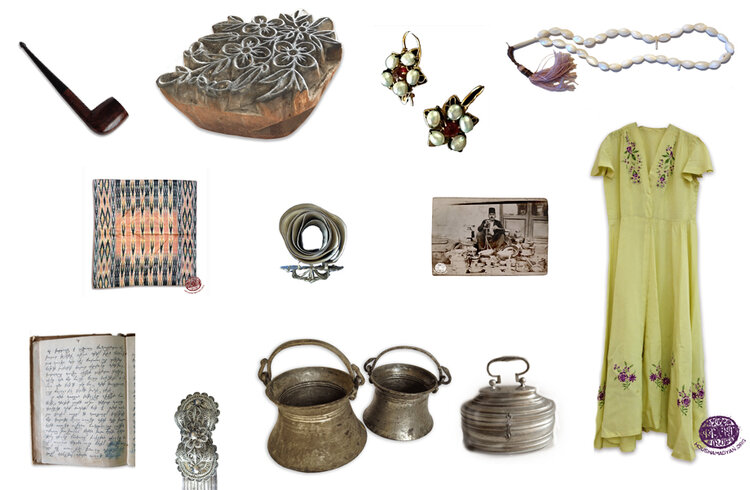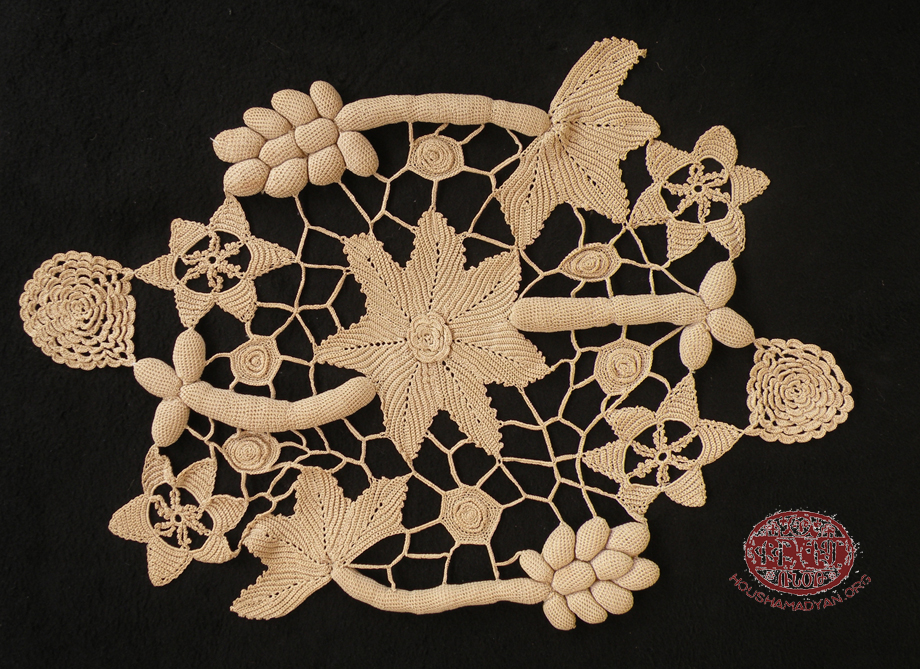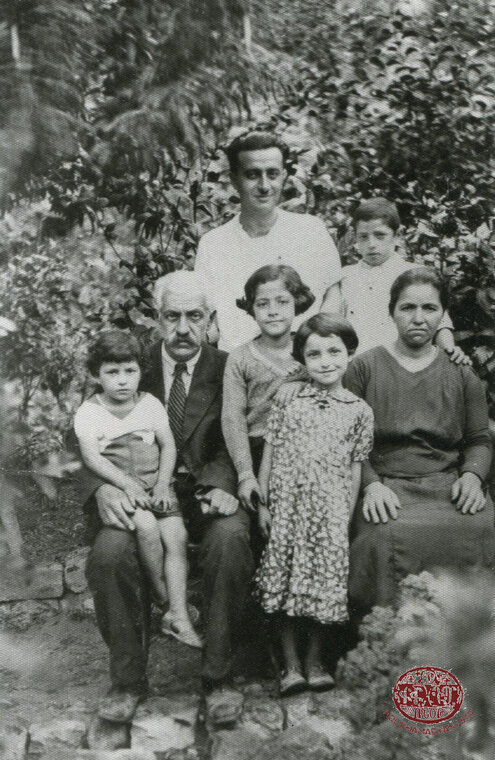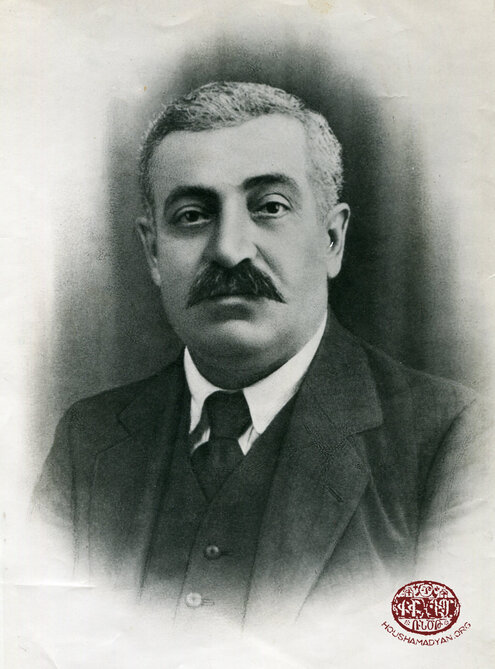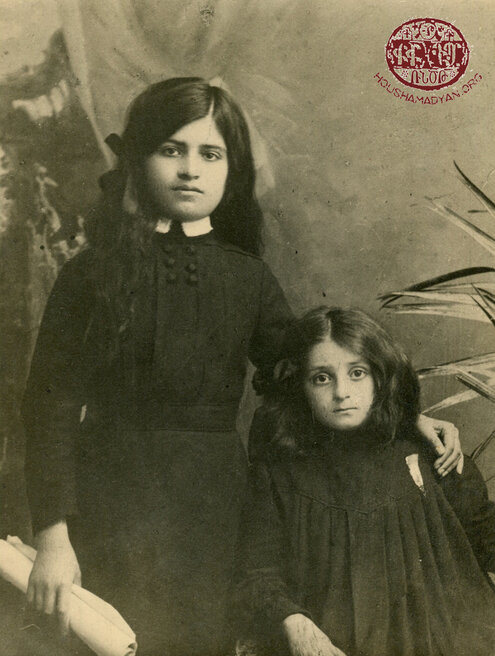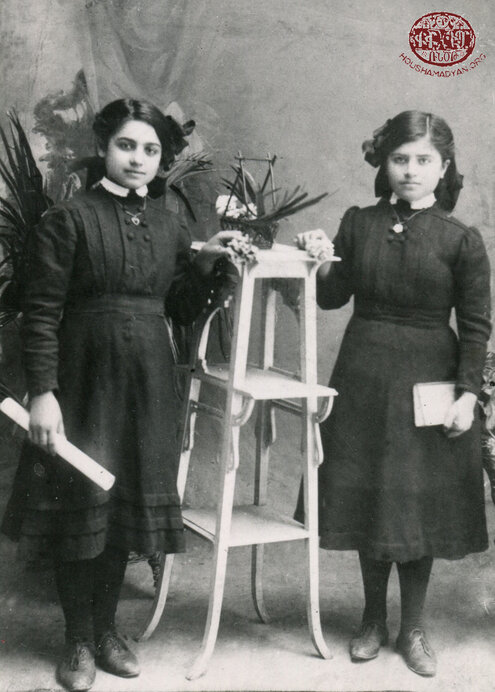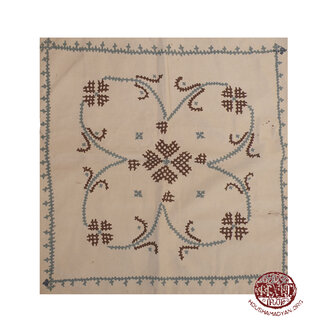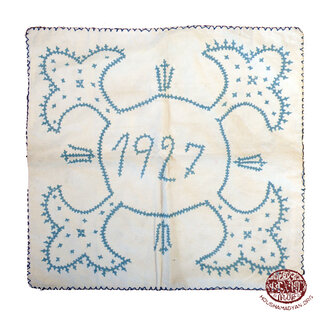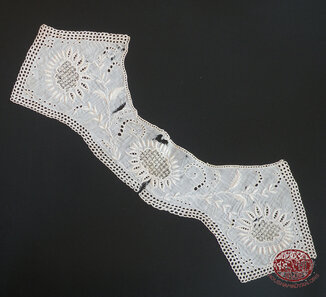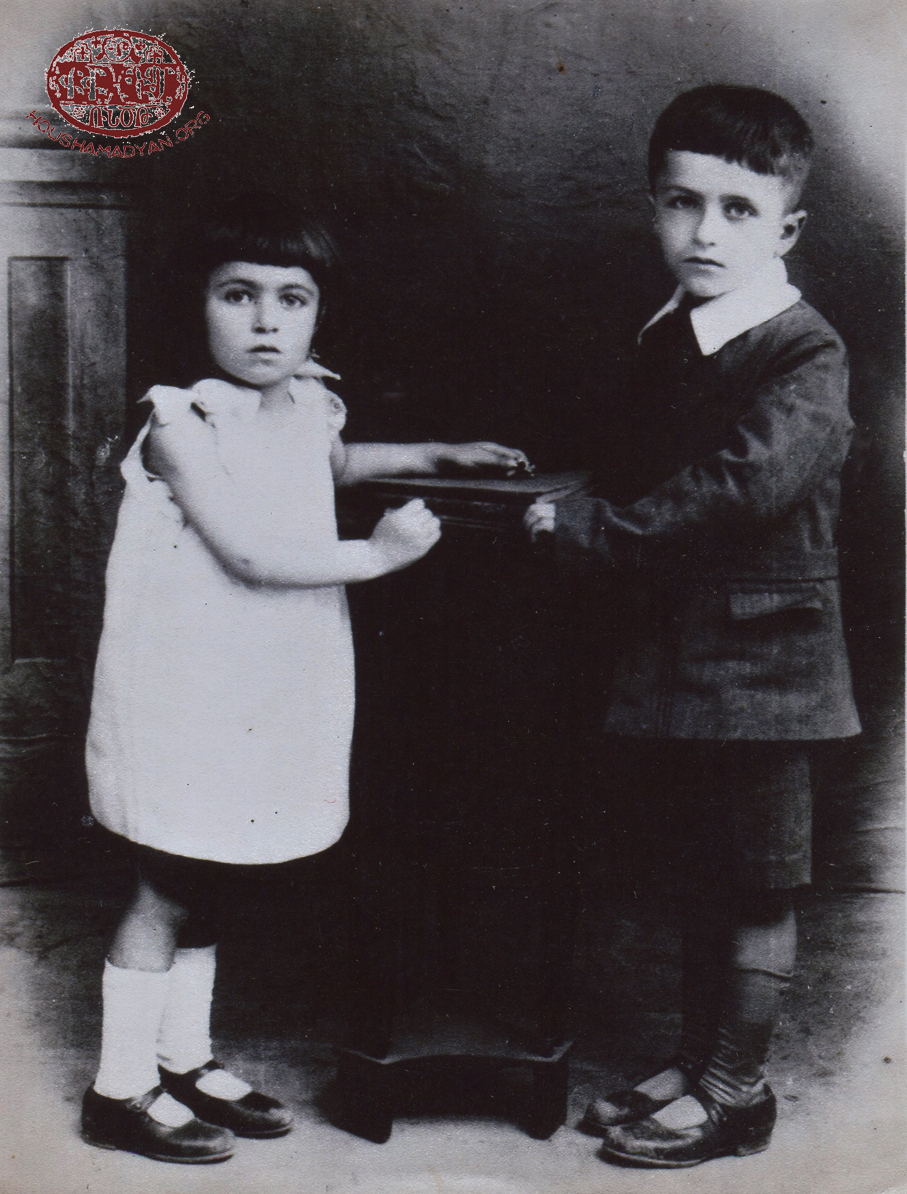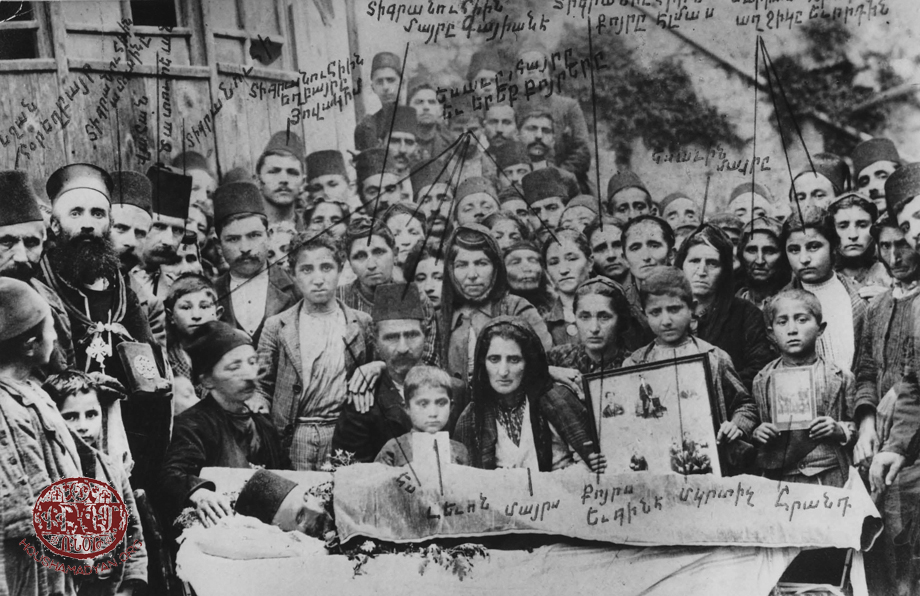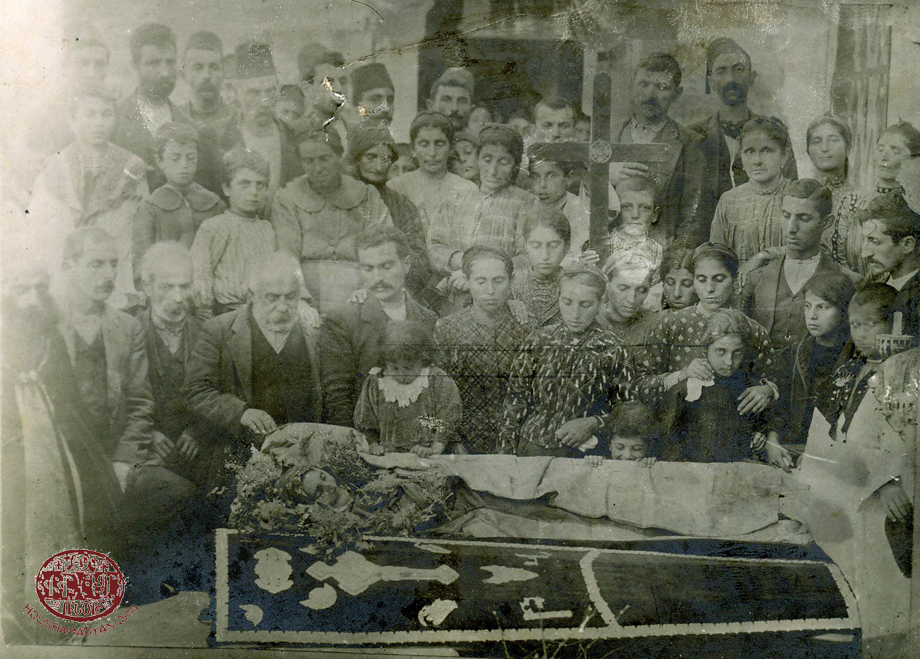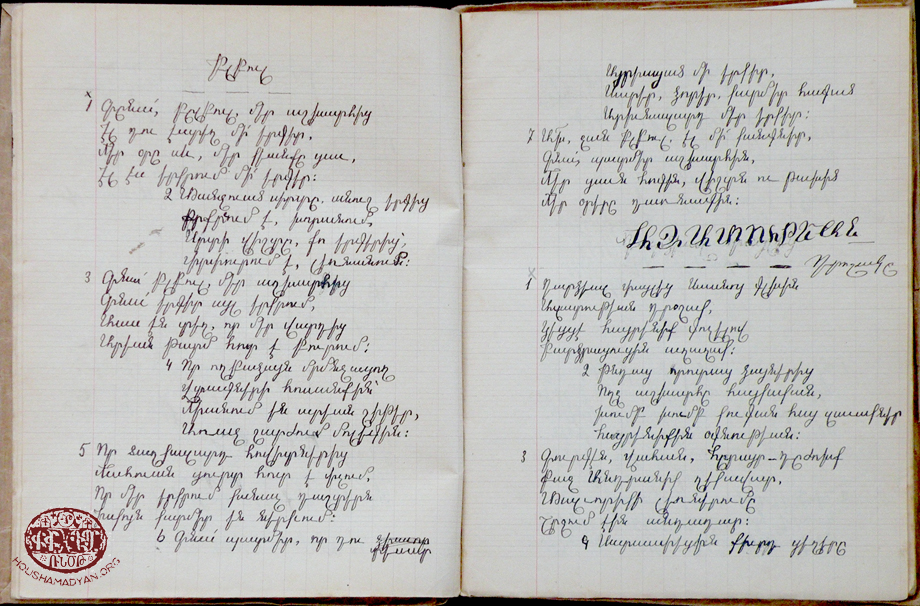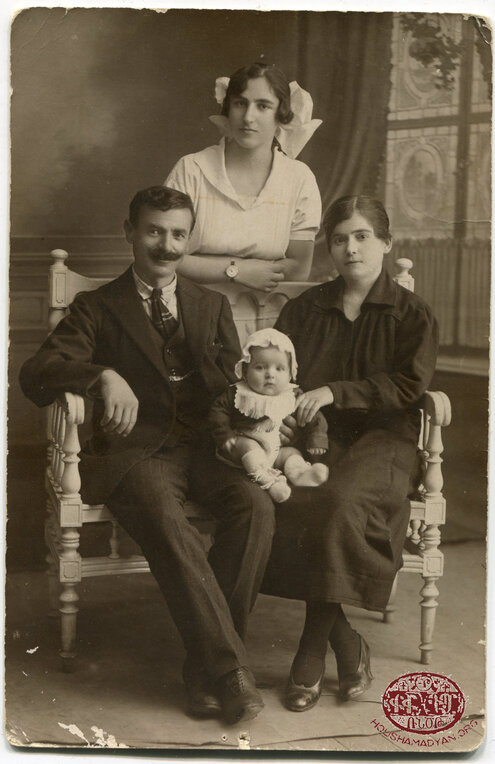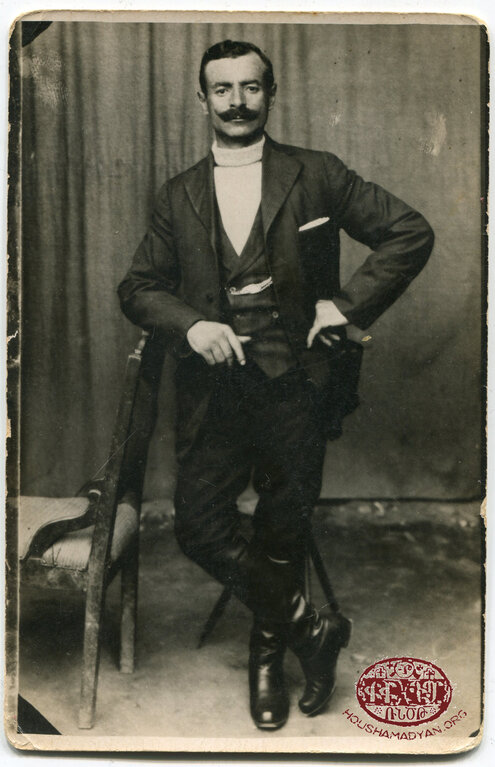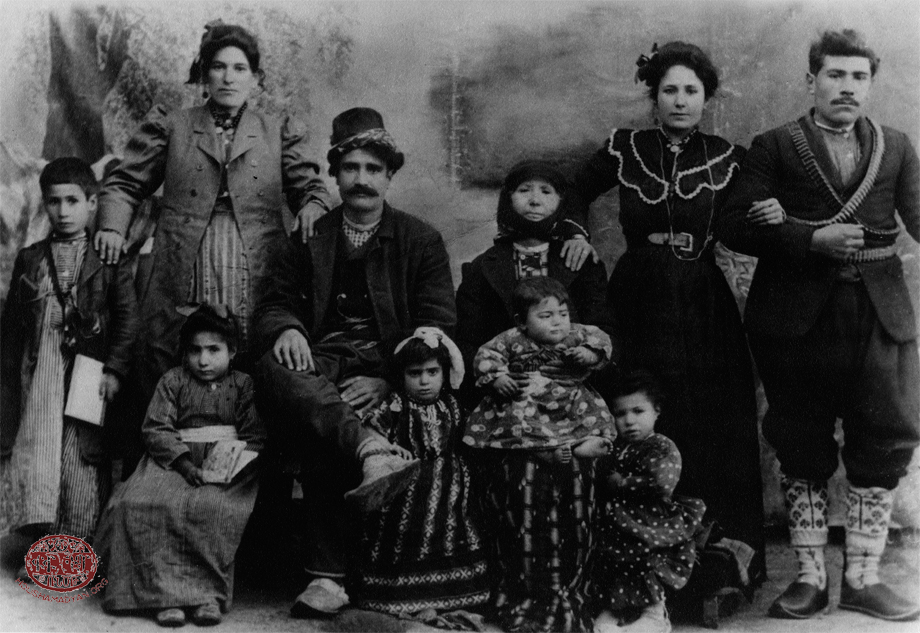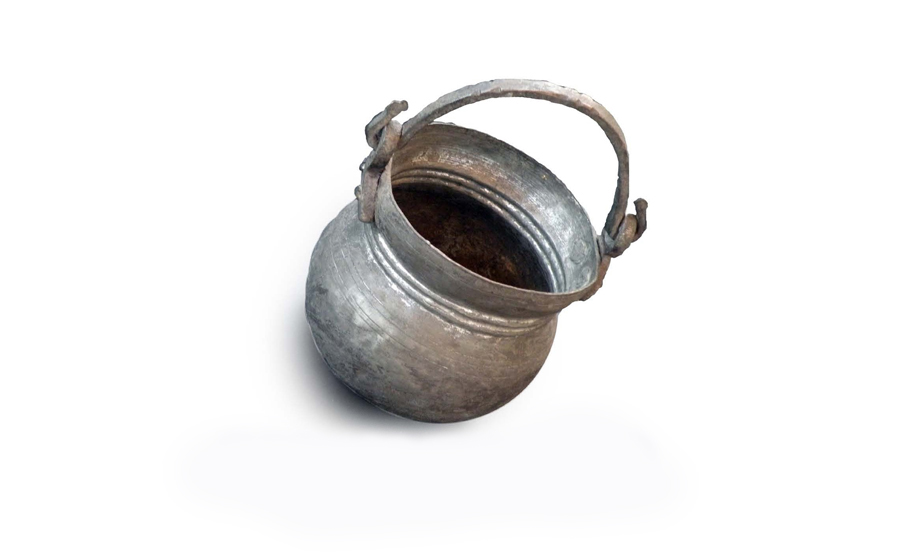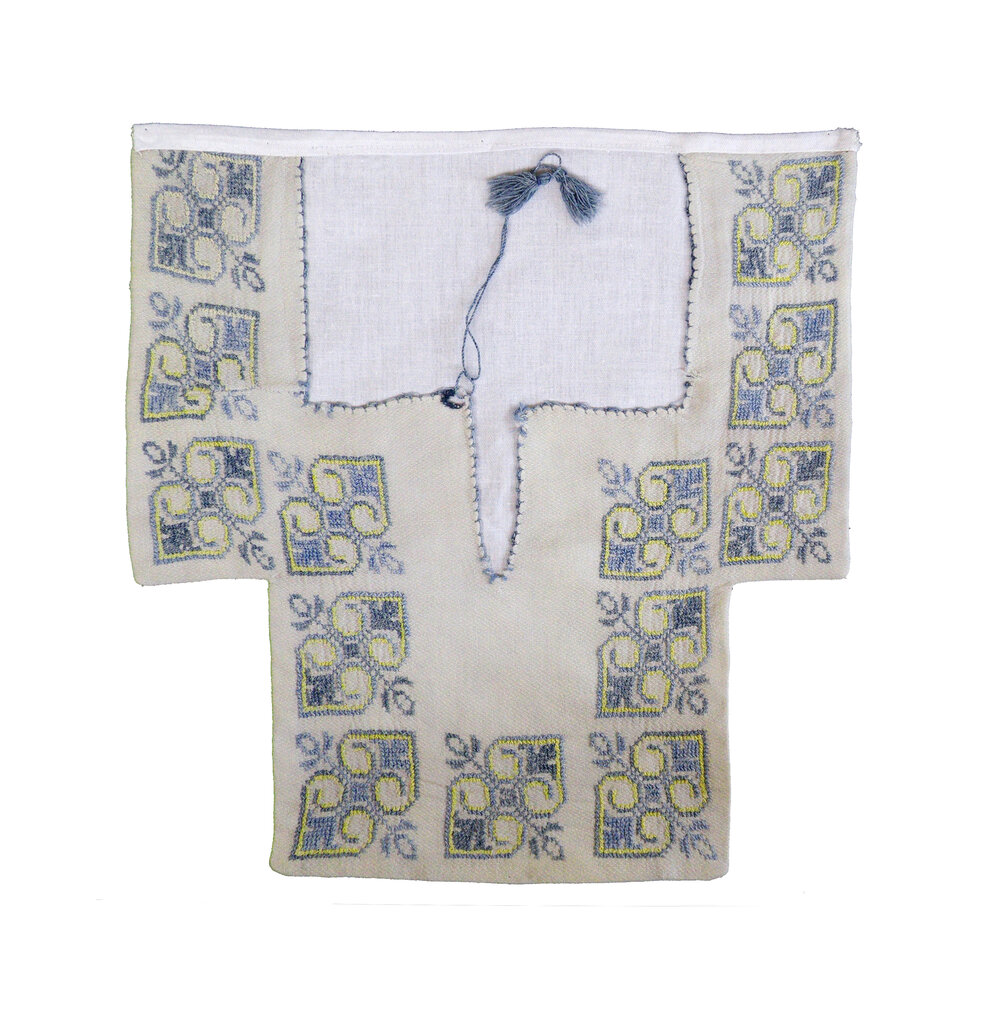Miscellaneous - France
Arslanian collection - Paris
Items that belongd to the Arslanian family were digitized in November of 2014 during an event organized by Houshamadyan on board of the Anako barge in Paris. Lucine Arslanian (born Der Bedrossian) brought the items. Lucine’s maternal side of the family comes from Dörtyol. The family moved to Beylan in the beginning of the 1920s. The items that belong to the Balians are represented here.
1) Balian family: Photograph taken in Beylan presumably sometime during the first years of the 1930s. Until 1939, Beylan was part of Syria, which at the time was under French rule. The town is in the vicinity of the Antioch-Iskenderoun area. In 1939, as a result of an agreement between France and Turkey, all of Antioch region (currently Hatay) becomes a part of Turkey and Armenians emigrate in large numbers. Sitting from left to right: Ardemis Balian (born 1924, on his father’s knees), Sinan Balian (1893/95-1937), Berta Balian (standing, born 1927), Mari (standing, born 1929), Lousaper (sitting, born Haroutyounian, Sinan’s second wife). Second row, standing: Garabed (Sinan’s son from his first marriage, Haroutyoun (born 1924).
2) Sinan Balian (1893/95-1937)
Jamgochian collection - Paris
These items were digitized in November of 2014 during an event organized by Houshamadyan on board of the Anako barge (Péniche Anako) in Paris. Alice Jamgochian (born Khacherian), born in Istanbul in the beginning of the 1920s, brought in the items. She is the daughter of Araksi Khacherian (born Simonian, 1898), an orphan from Arapgir who arrived at an orphanage in Istanbul after the Genocide where she learned knitting and embroidery. Later, in Istanbul, she marries Smpad Khacherian from Bitlis/Paghesh.
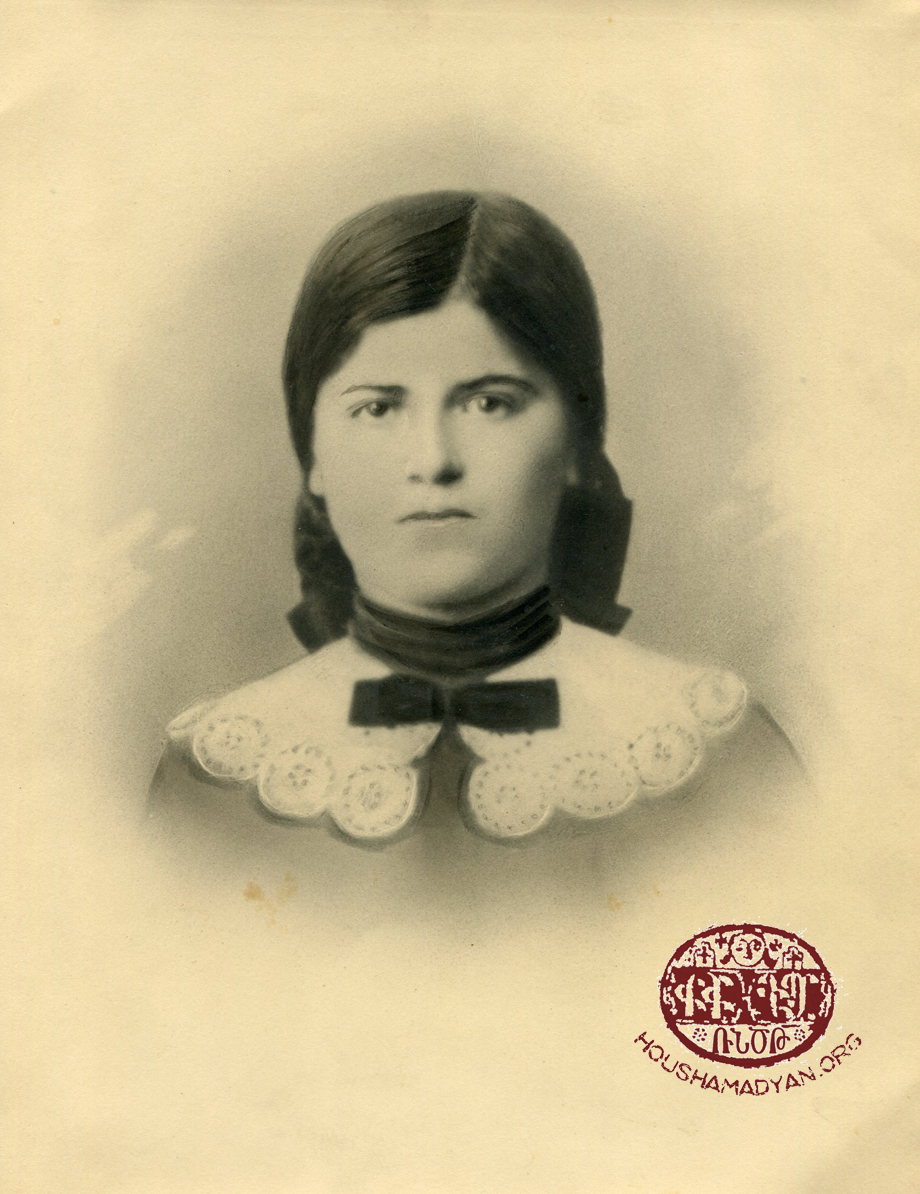
Araxi Simonian, later Khacherian. Born in Arapgir in 1898.
Kavedjian collection - Paris
Items which belong to Krikor Kavedjian, whose paternal side of the family originate from Stanoz (currently Yenikent) and maternal side from Ordou. Krikor’s mother, Araxi Kalousdian was born in Ordou in 1912. His father, Hovagim was a çapulaci (a person who makes leather slippers), his mother’s name was Dikranouhi (born Vartanian). Araxi had a sister called Berdjouhi. Araxi’s parents were killed during the Genocide. The two sisters are sheltered and taken care of by their Turkish neighbor Mahitap Khanum. After the ceasefire, Araxi and Berdjouhi are sent to Istanbul to a British orphanage taking in Armenian children. In 1922, the charitable organization (with Araxi and Berdjouhi) moves to Corfu Island in Greece. In 1925, the two sisters are accepted to the Tbrotsaser school/orphanage in Marseille (France). In 1928, Tbrotsasser moves to Paris and so does Araxi who continues to frequent the Armenian educational institution in the French capital. She marries Garabed Kavedjian in Paris and together they have two children, Krikor and Denis-Dikranouhi. Araxi passes away in 2003.
Hovagim Kalousdian was Krigor Kavedjian’s maternal grandfather. This photograph was taken in 1905 or 1906 on the occasion of Hovagim’s uncle’s funeral (last name Djknavorian, first name unknown). Hovagim’s mother, Kayane (the sister of the deceased) and his other sisters Dikranouhi and Elmasd are also in the picture. Krikor received this picture in the 1970s from relatives from Ordou who were living in Armenia.
Tadjirian collection - Paris
These items belong to Raffi Tadjirian. In the pictures, we can see his grandfather Tosoun and his family. Tosoun is from Karaman (South of Konya). He was baptized as Giragos but everyone knew him as Tosoun. They were two sisters and five brothers; the occupation of all brothers was to take care of horses. Tosoun survives the Genocide but later, in Konya, the Kemalist authorities sentence him to death despite the fact that Tosoun was an officer in the Turkish Army. Before the trial, the judge calls him and asks him if he knows people by the name of Nazar and Mariam Tadjirian. Tosoun answers saying that they are his parents. The judge tells the story of how when he was 6 years old, Nazar Tadjirian saved him from drowning in Karaman; the judge tells Tosoun to take one of the horses standing outside and to run away. Tosoun evades his death sentence and runs away to Erzurum/Garin. He lives in Istanbul for some time and later moves to Baghdad where he dies.
1) Sitting, from left to right: Tosoun Tadjirian, next to him is his wife (from a second marriage) Siranoush Mgrdichian, who was from the Kantsag/Ganja town in the Caucuses and had taken refuge in Turkey while in hiding from the Communist regime. Siranoush passes away in Paris in 1988. The child sitting between the couple is their son, Aram Tadjirian (1925-2011). Standing: their neighbor (name unknown).
2) Tosoun (1880 Karaman- 1954 Baghdad). The photograph was taken in 1907.
Aydabirian collection - Paris
This photograph was sent to us by Robert Aydabirian. The photograph portrays the Aydabirian/Donabedian family from the Kesirik (currently Kizilay) village in the Harput/Kharpert plain. The photograph is approximately dated to 1913. From right to left: The couple standing: Haroutyoun and Almasd Aydabirian, who are Robert Aydabirian’s paternal grandparents. Sitting: Almasd’s mother and brother who are from the Donabedian family. Standing left to her brother is his wife and the boy to his left is Almasd’s younger brother. To the right of the photograph, the girl sitting in front of Almasd is Araxi, Almasd’s and Haroutyoun’s daughter. To the left of the picture is Soultan, Almasd’s brother’s daughter. The child sitting on his grandmother’s knees is Nshan, who passes away about a year after this picture was taken. The identity of the other girl is not known. During the 1915 Genocide, the 3 men in this picture (Haroutyoun and Almasd’s two brothers) where of the first people to be deported and all three were killed. In 1914, Almasd and Haroutyoun have another child, whom again they name Nshan (Robert’s father) who survives the Genocide. He moved to France and becomes a correspondent for the Armenian newspaper “Harach” for many years.
Mathilde Madilian collection - Paris
These were given to us by Mathilde Madilian. She inherited them from her mother, Elise Boyadjian, who lived in Barfa, by the Black Sea, until 1915.
Copper Water Bowl – Bafra (on the Black Sea coast)
Property of the Boyadjian family from Bafra.
Elise Boyadjian survived the Genocide and took the bowl with her to Istanbul. She later moved to Marseille, and then to Paris.
The bowl has been in the family for five generations. Centuries ago, the family took the bowl with them on a pilgrimage to Jerusalem. There, they filled it with water from the Holy Land and took the bowl and its contents back to Bafra.
For the last several decades, the bowl is kept by Mathilde Madilian, Elise's daughter, who lives in Paris.
